by Jean Marie Carey | 14 Aug 2018 | Animals in Art, Art History, Contemporary Art, Dogs!, Expressionismus, Franz Marc, German Expressionism / Modernism, LÖL, Michelangelost©, Re-Enactments© and MashUps
Introducing Michelangelost™
Michelangelost™ is the newest name for the blog I have been writing since 2006, which began as mostly about dogs and animals. It has since had several titles, including Errata and German Modernism, and expanded to include numerous topics. Even though this website is becoming more of an official enterprise, I have kept my experimental and sometimes idiotic posts in the archive. The name Michelangelost™ came to me in Berlin, where Michelangelostraße is one of the stops on the Tiergarten Buslinie 200. Because the name of the stop is so long it was (funnily to me) abbreviated as “Michelangelost” on the scrolling Haltestelle legend. A remarkable photo was taken to document this occasion. I love obscurantist plays on words plus it seems descriptive of where we are in the art world right now. I had intended the Michelangelost™ project to be devoted to art criticism in the broadest sense, extended beyond galleries and museums to organisations, scenes, and academic affiliates, but I like the word and this photo in a more general way. So you will have to stay tuned for that secondary project, which now tentatively has the name “Intersectional Criminal Tribunal.” Meanwhile I am experimenting with this new design and how to retroactively typeset the older posts. – Until soon.
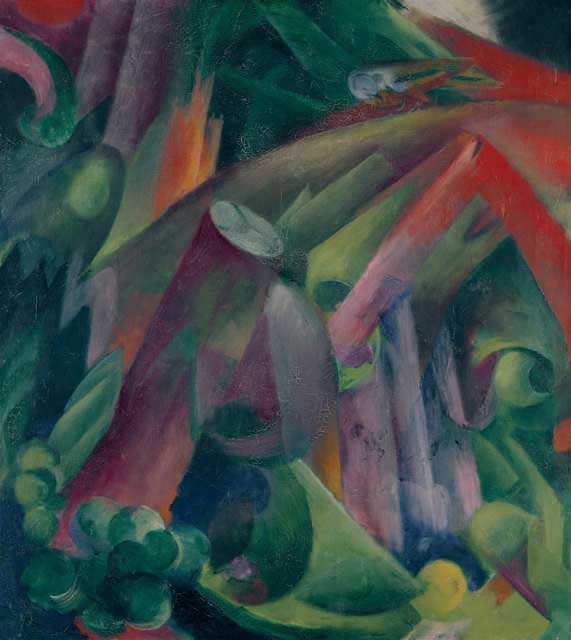
by Jean Marie Carey | 20 Apr 2018 | Animals in Art, Art History, Franz Marc, German Expressionism / Modernism, Re-Enactments© and MashUps

Franz Marc, Waldinneres mit Vogel (Taube), 1912.
Following below my reviews of two catalogues relating to the Hildebrand–Cornelius–Gurlitt bequeathal (artworks from the Gurlitt hoard) as has appeared on the Museum Books website and archived on Humanities Commons. First some digressions on the subject of Raubkunst.
One of the works recovered in Munich in 2012 you see here, Franz Marc’s Waldinneres mit Vogel (Taube) (1912). As in Die Vögel (also 1912 – I am just saying!) which lives at the Lenbachhaus, it is very hard to reproduce and thus to see the tone and hue of the violet Marc uses in these paintings about the avian experience. More on this soon, but hopefully you can get a bit of an idea of just how luminous and concatenate the purple and jades are in this canvas. Doubtful it can undergo conservation.

Franz Marc, Waldinneres mit Vogel (Taube), 1912, detail.
Both of these catalogues are very good, and I’m sure the forthcoming second part of the Gurlitt Status Report will be excellent too. (In another of the case’s amusing-macabre turns, these volumes are issued by the Hirmer Verlag, Hirmer, you may recall being the menswear hoarding store of choice of Cornelius Gurlitt. The companies are unrelated.)
But one of the things a scholarly work, at least under the present rules of publication, cannot capture is the intense emotion the discovery of the Gurlitt trove aroused in those who love the work – and not just art historians. One of the most intense experiences I had in Munich was the day in 2013 the Gurlitt seizure was revealed in FOCUS magazine. When the Süddeutsche Zeitung and Frankfurter Allgemeine began flashing notifications and tweets about the story at around 15:00 on 3 November, Schwabing’s ride-or-die Expressionism lovers (i.e. everyone in the neighborhood) literally ran out onto the streets both to steal a “just out walking” glimpse of the Gurlitt flat on the north side and to snatch up physical copies of FOCUS. I was fortunate to be on the U3 on the way to Schleißheimerstr already and just jumped off at the Olympiapark stop and, for once observing Bavarian queue rules, jostled my way up to the front of the news seller’s and grabbed the last one.
When I heard Simon Goodman speak at the Getty Research Institute this past March I was struck of course by his story, which is told in his book The Orpheus Clock: The Search for My Family’s Art Treasures Stolen by the Nazis (2015), but also by his marshaling of those powerful narrative and emotional resources that come from outside academic art historical presentation. You can view the whole talk at the Getty website.

Franz Marc, Waldinneres mit Vogel (Taube), 1912, detail.
First and foremost is the title: Who wouldn’t want to read a book called The Orpheus Clock, no matter what it was about? Goodman never wavers from the issue of provenance research that is in the foreground of the saga – if you watch the video you will hear Thomas W. Gaehtgens recount how Goodman quietly and unassumingly worked in the Getty library for years without revealing himself – but the story of the family, and the intrinsic value of the stolen and then recovered artwork, moves the narrative.
The other thing that strikes me, as my own Raubkunst at the Ringling project inches forward, is the cost of this kind of research, in every sense. For all his drive, patience, eloquence, and charm, Simon Goodman had a few advantages in his quest. But finally even the well-educated polyglot with many financial security, business, legal, and social connections could only use the threat of raining shame upon Sotheby’s and Christie’s to move them to reveal important information about the eponymous 16th Century silver and paintings by Cranach, Degas. Drive and weaponized publicity should not be the only avenues of retributive justice available. Systemic cooperation needs to lead.
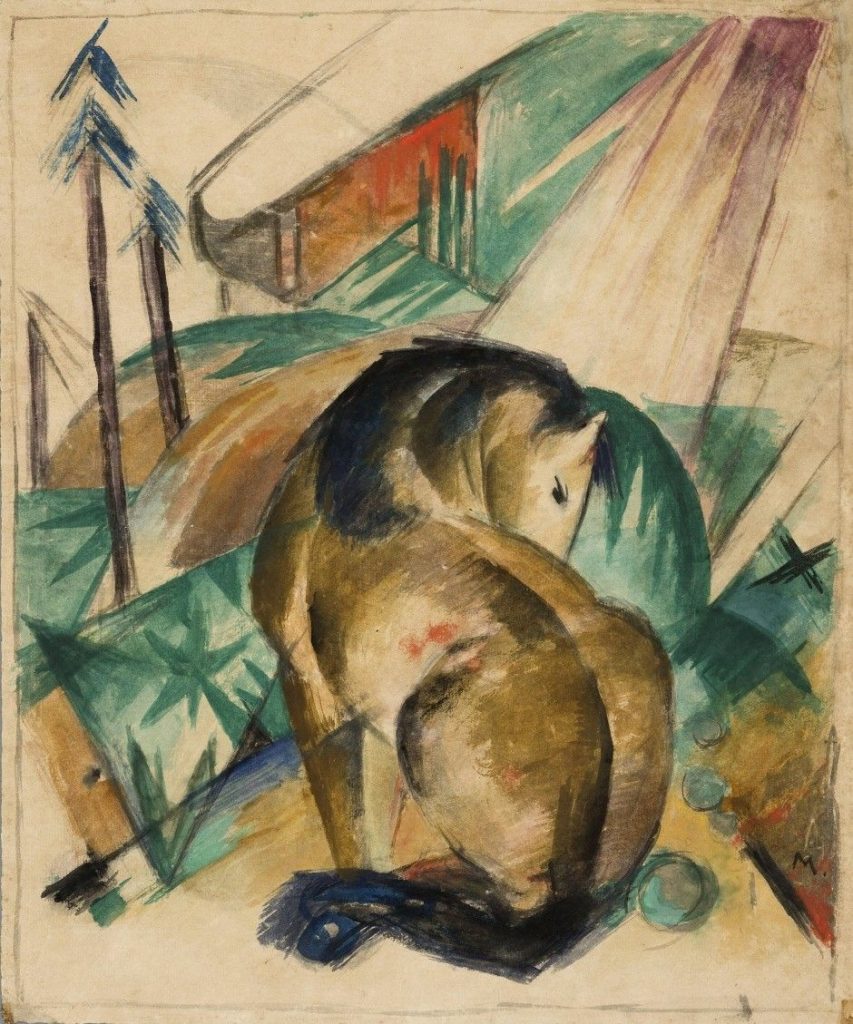
Franz Marc, Sitzendes Pferd, c. 1912.
Look at this multimedia extravaganza! LOOK AT IT! LöL. Don’t ever tell me again FM isn’t funny.
The Gurlitt Hoard
In the wake of the revealed discovery in November 2013 of what has become known as the “Gurlitt hoard” – the thousands of artworks seized in a 2012 raid by the by German Federal, Bavarian State, and Munich police upon the Schwabing apartment of then 80-year-old Cornelius Gurlitt – a number of thoughtful and well-researched books have emerged, notably The Munich Art Hoard: Hitler’s Dealer and His Secret Legacy (2015) by Catherine Hickley.[1] Gurlitt, the peripatetic son of art dealer, gallerist, and sometime-curator Hildebrand Gurlitt, died in May 2014, bequeathing his collection to the Kunstmuseum Bern. The lifting of the embargo by a German court to allow Gurlitt’s trove to be dispensed to the museum was far from acclaimed – in fact, with many of the Gurlitt hoard works by 20th Century luminaries missing since the 1930s recovered from Gurlitt’s possession-jammed flat still of uncertain provenance – quite the opposite. Thus the museum of the city of Bern has been placed on defensive alert even while surely exulting over the acquisition of paintings, drawings, and prints by Franz Marc, August Macke, Henri Matisse, Ernst Ludwig Kirchner, and many others that greatly enrich our understanding of the historical avant-garde.
A Gurlitt hoard research catalogue and attendant exhibition was promised by the Kunstmuseum Bern, surveying the contents of its permanent collection as well for the presence of Raubkunst. And director Matthias Frehner kept his promise. The depth if not the scope of Modern Masters “Degenerate” Art at the Kunstmuseum Basel, the resulting publication, is even more ambitious than anticipated. lt offers a comprehensively illustrated checklist of the paintings from the Gurlitt acquisition as well as many other fascinating images and tales, from an account of the activities of patron-donor Othbar Huber to archival photographs rarely seen of Kathe Thannhauser and Herwarth Walden. However the excellent series of volumes Gurlitt Status Report: – Confiscated and Sold, Kunstmuseum Bern – Nazi Art Theft and Its Consequences, Art and Exhibition Hall of the Federal Republic of Germany (the second has just appeared – watch this space for updates) taking stock both more specifically and in consideration of the broader ramifications of the Gurlitt situation to some extent eclipses the Bern effort, launched from a collaborative co-exhibition at the Bundeskunsthalle Bonn.
(more…)
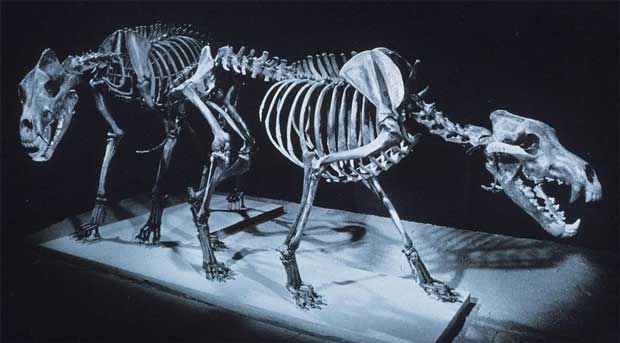
by Jean Marie Carey | 27 Mar 2018 | Animals, Art History, Franz Marc, German Expressionism / Modernism, Re-Enactments© and MashUps

Skeletons of dire wolves at the La Brea Tar Pits Museum, Los Angeles
One of the first animals I became fascinated with when I was very little was the dire wolf (canis dirus). This was not for the “dinosaur” reason (although I was also very interested in Sauropterygia), a sense of what-if nostalgia for an unknowable past, but for the opposite, that being just a bit bigger than wolves of today, and relatively recently extinct (in the late Pleistocene, about 10,000 years ago) surely there could be a few hanging out still in the Fagne.
Around the same time I was also horrified to learn of the existence of the La Brea Tar Pits, despite its amazing contents of millions of prehistoric animal remains. I couldn’t stop thinking about all the animals slowly suffocating in the tar. I guess I must have pushed this memory aside somehow because despite knowing that the tar pits were right in the middle of Los Angeles (also from the famous sequence in Bad Influence (1990)), I was astonished to see that the LBTP are immediately adjacent to the Los Angeles County Museum of Art.
Staying just down the street, I can walk through the excavation sites on my way to the museum. As many other people have commented the sunniness and wide-boulevardisation of Los Angeles compared to its low pedestrian density is uncanny already. Most of the time the paths around the tar pits are also eerily quiet. There have been a few days of heavy rain, and during those times of precipitation accumulation, water collects on top of the gravel, the grass, and the tar beneath. It’s a strange thing to witness.
Anyway the La Brea Tar Pits Museum has collected the skulls of more than 400 dire wolves, which yielding lots of information about the sizes and shapes of the animals and even allowed them to be divided into two subspecies, Canis dirus guildayi and Canis dirus dirus.

Bruce Nauman, “La Brea/Art Tips/Rat Spit/Tar Pits,” 1972

by Jean Marie Carey | 12 Jan 2018 | Art History, August Macke, Franz Marc, Re-Enactments© and MashUps
My research about the 1914 Franz Marc essay »Das abstrakte Theater« and Marc’s collaboration with Hugo Ball on an intended production of The Tempest has been published in a special arts issue of Empty Mirror. The fun long title of the article is “The Tempest and the Savages: Franz Marc, Hugo Ball, and a Decisive Moment in Dada-Expressionist Theater With a Special Appearance by August Macke,” and this piece contains important breaking historical avant-garde news.

Fig.01: Franz Marc, Fragmentary First Page of „Das abstrakte Theater,“ 1914. Das Archiv für Bildende Kunst im Germanischen Nationalmuseum, Nürnberg, Germany.
Here is the abstract: This article discusses the 1914 Franz Marc essay “Das abstrakte Theater” and the events surrounding an “Expressionist” production of Shakespeare’s Der Sturm planned by Marc and Hugo Ball the same year. Marc’s position in this detour from painting and writing can be understood in terms of his embrace of “die ‘Wilden’” – “the ‘Savages’” – an idea Marc introduces in 1912’s Blaue Reiter Almanac – as a metaphorical aspiration and as a state of being for both artists and the public as patrons of the arts and citizens of modernity. I also bring recognition to August Macke’s background in theatrical theory and design in terms of how this influenced Marc, particularly in analysis of the artists’ collaboration on Macke’s contribution to the Blaue Reiter Almanac, the essay “Die Masken,” and how this relates to the Der Sturm project. I propose a way of understanding how Marc’s beliefs in the paradoxically beneficial power of destruction dovetailed with Ball’s theology. In the context of this background information I give close reading of paintings Marc made of the Caliban and Miranda characters from Der Sturm. I also correct inaccuracies in the record regarding the chronologies of this encounter between these protagonists of Dada and Expressionism, and in our understanding of Marc’s text itself. Viewing this data in a holistic manner allows new interpretations of influences and collaborations amid the historical avant-garde.
It is great working with Denise Enck at Empty Mirror so it would be nice to look at the article on the Empty Mirror website, but if you would like a PDF of the article there is one here and also at Humanities Commons.

Fig.04: Franz Marc, Miranda, 1914. ( Tempera, 46 x 39.5 cm.) Kunstmuseum Basel, Kupferstichkabinett der öffentlichen Kunstsammlung, Switzerland.
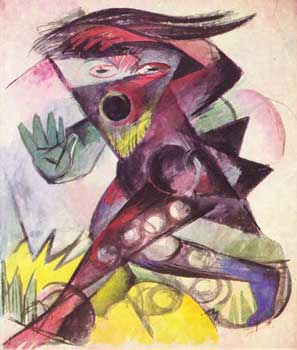
Fig.03: Franz Marc, Caliban, 1914. (Figure for Shakespeare’s „Der Sturm“. Tempera, 46 x 39.5 cm.) Kunstmuseum Basel, Kupferstichkabinett der öffentlichen Kunstsammlung, Switzerland.

by Jean Marie Carey | 22 Sep 2017 | Animals, Animals in Art, Art History, Dogs!, Franz Marc, German Expressionism / Modernism
My article related to Franz Marc and his dog, “To Never Know You: Archival Photos of Russi and Franz Marc” has been published in the Fall 2017 issue of Antennae: The Journal of Nature in Visual Culture.
Here is the abstract for the story about Franz Marc and his dog, which also contains some valuable personal insights on vernacular photography from other scholars and benefited from the questions and comments from my Doktormutter Cecilia Novero:
-
This essay examines photographs of the German Expressionist artist, writer, and Tierliebhaber Franz Marc and his dog, Russi, taking the position that one of the most obvious characteristics of Marc’s life his – affectionate and respectful relationship with Russi – has been largely overlooked, though its documentation is clear. I extol the value of what are normally categorised as snapshots in reconstructing animal and human biographies. This raises questions about what photographs are valuable to such research, and why some are used repeatedly and others ignored. Significantly, a previously unknown photograph of Marc taken by his brother Paul in is published for the first time.
Mainly I had wanted to write about discovering this photo of Franz Marc in the DKM/GNM, so here it is again:

Franz Marc, 1914, in Munich. Photo by Paul Marc. Germanisches Nationalmuseum | Des Deutschen Kunstarchivs | Nürnberg

by Jean Marie Carey | 21 Jul 2017 | Art History, Franz Marc, German Expressionism / Modernism, LÖL, Re-Enactments© and MashUps
Much as I enjoy burying the lede, the headline on this story is that I found a heretofore unpublished photo, and this is the Franz Marc photo, taken in the spring of 1914 by the artist’s brother, Paul Marc, in Munich:

Franz Marc, 1914, in Munich. Photo by Paul Marc. Germanisches Nationalmuseum | Des Deutschen Kunstarchivs | Nürnberg
The whole story of finding the Franz Marc photo and a thorough analysis of why it might be that significant images of people and animals are overlooked is forthcoming in the second part of the “Exposing Animals” sequence of Antennae: The Journal of Nature in Visual Culture in September, and this photograph and some others will be reproduced there, but it is also appearing in a different kind of work I did for Empty Mirror Books that comes out this week, so I decided to post it, finally (I first found it in 2015!), here today.
Beyond standing as a strong reminder that there is so much we have not yet learned about the historical avant-garde, this is just a wonderful photograph, “eerie and magnificent,” as Marc would say, so I will just leave it at that for now.

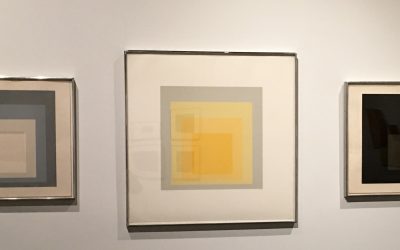
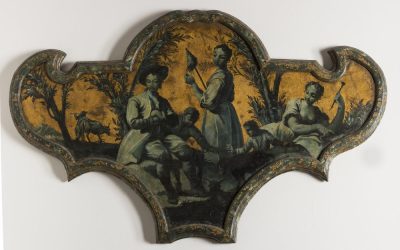










 RSS - Posts
RSS - Posts